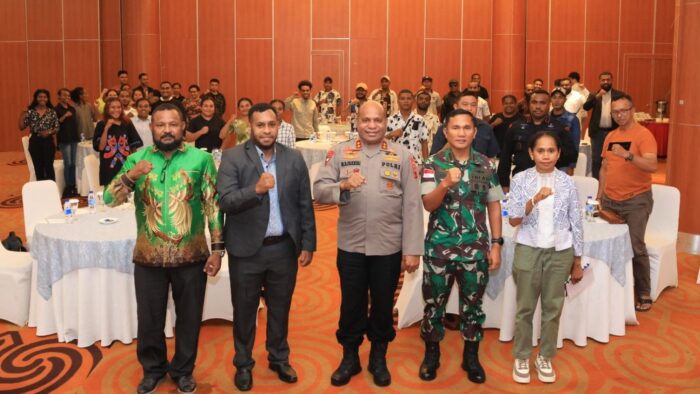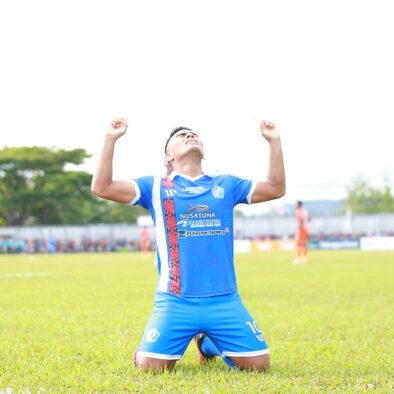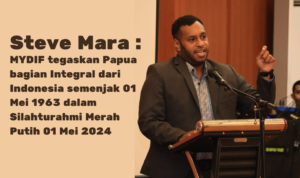Thelandofpapua.com – May 1st marks a significant milestone in Indonesian history as it commemorates the integration of Papua into the Unitary State of the Republic of Indonesia (NKRI).
On May 1, 1963, Irian Jaya, now known as Papua, was officially transferred from the United Nations Temporary Executive Authority (UNTEA) to Indonesia, solidifying Indonesia’s sovereignty over the region.
The journey towards this integration, however, was not without its challenges and complexities. Steve Mara, Chairman of the Melanesian Youth Diplomacy Forum (MYDIF), shed light on the historical context during the Red and White Gathering event held in Jayapura, Papua, on May 1st.
“Since Indonesia’s independence from the Netherlands in 1945, the nation’s territorial integrity extended from Sabang to the Moluccas. Yet, the Papua region remained under Dutch authority,” explained Mara.
The Round Table Conference (KMB) in The Hague in 1949 marked a pivotal moment when the Netherlands pledged to hand over Irian Jaya to Indonesia, but this promise remained unfulfilled. Instead, the Netherlands toyed with the idea of granting independence to Papua, fostering the Free Papua Movement (OPM) and establishing cultural symbols such as the Morning Star flag and the anthem “Hai Tanahku Papua.”
In response to these developments, President Soekarno launched the Tri Komando Rakyat (Trikora) initiative in 1961, aimed at thwarting the establishment of a Dutch puppet state in Papua. This initiative emphasized the importance of raising Indonesia’s flag in West Irian and mobilizing for the defense of national unity.
The subsequent formation of the West Irian Liberation Command Mandala, led by President Soeharto, marked a turning point. However, it came at a cost, with the loss of lives such as Rear Admiral TNI Yosaphat Soedarso in battles against the Dutch.
Despite the challenges, Papua’s integration into Indonesia was formalized through the New York Agreement in 1962, followed by the Act of Free Choice (Pepera) in 1969, where the majority of Papuans chose to remain part of Indonesia.
Steve Mara emphasized the importance of recognizing the contributions of Papuan heroes such as Frans Kaisiepo, Silas Papare, Marthen Indey, and Johanes Abraham Dimara. The Red and White Gathering served as a platform to honor their sacrifices and to inspire the youth of Papua in building a brighter future within the framework of NKRI.
“We use this moment to instill a sense of pride and unity among young Papuans, striving for a safer, more peaceful, and prosperous Papua,” remarked Mara, highlighting the theme of “Building Indonesia from Papua.”
As Indonesia commemorates the Day of Integration of Papua, it reflects not only on its past struggles but also on its ongoing commitment to fostering unity, diversity, and progress across its diverse archipelago.



